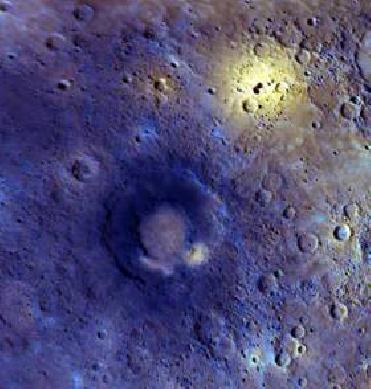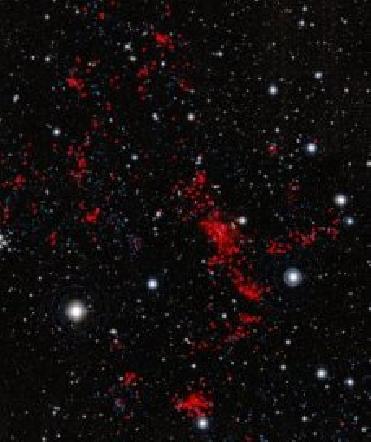
This region in Mercury, viewed in detail for the first time during the third flyby of MESSENGER spacecraft, appears to have experienced a high level of volcanic activity. Image credit: NASA
WASHINGTON (BNS): The third and final flyby of Mercury by NASA�s MESSENGER spacecraft has unlocked some more hidden aspects about the planet and its environment.
The spaceship flew by Mercury on September 29 for a critical gravity assist to remain in course to enter the planet�s orbit by 2011. During this process, MESSENGER has mapped almost 98 percent of Mercury�s surface, NASA said.
The latest observations by the spacecraft include a region with a bright area surrounding an �irregular depression�, suspected to be volcanic in origin.
Other images reveal a double-ring impact basin approximately 290-kms across. The basin is similar to a feature what scientists call the �Raditladi� basin, which was viewed during the probe's first flyby of Mercury in January 2008.
�This double-ring basin, seen in detail for the first time, is remarkably well preserved. One similarity to Raditladi is its age, which has been estimated to be approximately one billion years old. Such an age is quite young for an impact basin, because most basins are about four times older. The inner floor of this basin is even younger than the basin itself and differs in color from its surroundings. We may have found the youngest volcanic material on Mercury,� said Brett Denevi, a member of the probe's imaging team and a postdoctoral researcher at Arizona State University in Tempe.
The probe also sheds light on how Mercury�s atmosphere varies with its distance from the Sun.
�A striking illustration of what we call �seasonal� effects in Mercury's exosphere is that the neutral sodium tail, so prominent in the first two flybys, is 10 to 20 times less intense in emission and significantly reduced in extent.
�This difference is related to expected variations in solar radiation pressure as Mercury moves in its orbit and demonstrates why Mercury's exosphere is one of the most dynamic in the solar system.� said participating scientist Ron Vervack at the Johns Hopkins University Applied Physics Laboratory.
The observations also show that calcium and magnesium exhibit different seasonal changes than sodium; that iron and titanium reserves are quite average than low as expected by scientists earlier.
 Next Article
Next Article













The Indian Air Force, in its flight trials evaluation report submitted before the Defence Ministry l..
view articleAn insight into the Medium Multi-Role Combat Aircraft competition...
view articleSky enthusiasts can now spot the International Space Station (ISS) commanded by Indian-American astr..
view article